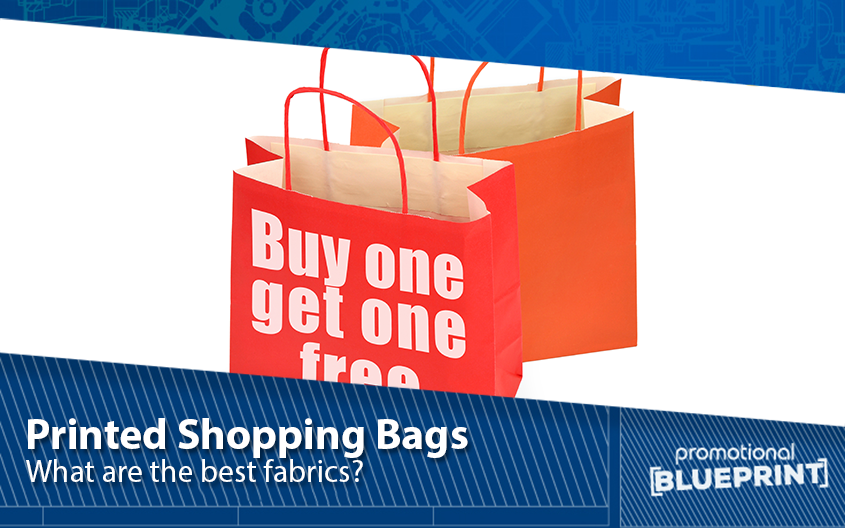
With growing concerns for our environment comes our need to do our part and help fight the crisis. For most people, this includes switching from plastic carrier bags to reusable eco-friendly bags. But which fabrics should you focus on if you want to protect the environment? We’ve got all the details below!
Recycling vs Reusing: What’s the Difference?
Switching to eco-friendly bags is a sound choice nowadays, but remember to know your terms before buying some of them. Brands will usually indicate whether a bag is reusable or recyclable. These terms may sound similar, but they definitely aren’t the same!
Essentially, recyclable bags can be turned into raw materials once they no longer serve any purpose to the user. Once in the raw material stage, companies can use them to create other products.
In contrast, reusable bags don’t require any special treatment. You can reuse them for a different purpose without actually consuming energy (much like recycling).
The Best Eco-Friendly Fabrics to Consider
Cotton
One of the materials that ought to be on your radar if you want to go green is definitely cotton. Ideally, try to use organic cotton as it is the safest choice because its cultivation doesn’t call for the use of pesticides. Organic cotton scrap can also be a great option, as it is easy to spin into entirely new yarn.
Some cotton cultivators may use chemicals to boost the growth, so remember to do your research well before buying cotton bags. Also, consider the weight. You can get 5 to 8 oz cotton bags like the Somerhill 5oz Coloured Cotton Shoppers at great prices, but if you need something more durable, look for 10 or 12 oz ones such as the Castleford 10oz Midi Cotton Shoppers.
Here are some pros and cons to keep in mind while shopping for cotton bags:
Pros
- Cotton bags feel great to touch (soft and smooth!)
- Can be washed in the washing machine
- Durable and strong (ideal for carrying around daily necessities or heavier loads)
- Suitable for air-drying (prevents shrinkage and keeps your artwork looking fantastic!)
- Easy to customise for branding purposes
Cons
- Non-organic cotton cultivators rely on pesticides
- Bags made from cotton aren’t moisture-resistant unless they’ve been chemically treated
- 100% cotton bags may easily shrink and develop wrinkles
- Growing cotton calls for high amounts of water
Jute
Otherwise known as burlap, jute is another popular natural plant fibre that many brands are using to produce fabulous reusable shopping bags. Here are some major pros and cons using jute bags:
Pros
- Requires little to no pesticides
- Suitable for heavier loads due to its durability
- Good for blending with other materials, such as non-woven polypropylene
- Jute is biodegradable and can even be composted
- Both a natural and renewable resource that does well in high rainfall regions
Cons
- It has to be treated with chemicals if you want it to be moisture-resistant
- The surface of the fabric is not smooth but rather grainy
- Printing artwork on jute bags has its limits, though you could print fine lines and bold objects on them
Related content:
Fashionable and Sustainable — Promotional Jute Bags
Hemp
Another fan-favourite among bag producers is hemp, whose fibres are often longer and stronger than some of its natural counterparts. As hemp can endure drought, it makes it a somewhat easier crop to rely on if you’re in the bag industry. Besides that, the plant doesn’t need pesticides or fertilisers to grow!
Some pros and cons to consider here include:
Pros
- Hemp doesn’t require as much water to grow as cotton and similar fibres
- It’s smooth to touch
- You can blend it with other materials if you want to create more premium fabrics
- The fibres are both strong and rot-resistant
Cons
- Though it’s smooth, it can feel a bit grainy at times
- Refined hemp requires more water to produce, making it a less than ideal eco-friendly choice
- Hemp is overall more expensive than some other types of natural fibres
Polypropylene
Finally, keep in mind that not every type of plastic is off the table here. Non-woven polypropylene grocery bags are eco-friendly because they are reusable. One of the best advantages is that they aren’t too expensive and can be very strong, making them ideal for groceries and similar heavier loads.
While shopping for PP bags, remember to check the GSM (grams per square metre), or rather, the fabric’s weight. A higher GSM means that the material is strong enough to last for quite some time — which is a notable feature you should highlight if you want to promote your brand with these bags.
Here are some pros and cons of PP bags you ought to know about:
Pros
- PP isn’t as porous as some other materials, and it’s even chemical-resistant and recyclable
- PP bags are easy to clean and thus reuse again and again
- Strong enough for hauling heavier loads
- Suitable for elaborate customisation and branding (including lamination and screen printing)
Cons
- Non-renewable and non-biodegradable
- You need to use special ink to print thicker lines on the fabric
- You cannot wash these bags in the washing machine
You may also like:
Drawstring Backpacks — A Practical and Functional Item
Check out our full collection of promotional bags which includes tote bags, drawstring bags, and backpacks. If you’re looking for something else, see our collection of promotional bestsellers. We are always here to help, so don’t hesitate to give a member of our experienced team a call on 0800 0148 970 or simply email us today.






